Six out of ten marketers say that lead generation is their number one priority. That’s because, in order to grow your business, you need to be able to attract high-quality leads that will eventually become paying customers.
But as times change, the most effective ways to gather new leads change too. What was most effective 10 years ago is no longer the best way to attract visitors to your website and convert them into paying customers. Below, we’ve collected the ten best lead generation strategies for 2021, along with examples of each.
What is lead generation?
Lead generation is the process of attracting attention, capturing lead contact details, and gradually turning total strangers into potential customers. Any marketing strategy that you use to bring new people to your business is a type of lead generation. That might include an advertising campaign in your local newspaper, a wacky-wavy-inflatable tube man outside your shop, social media content, or a series of whitepapers designed to offer helpful technical advice.
There are as many types of lead generation strategies as there are types of customers and businesses. The important part is finding the right mix of lead generation tools that bring in the right types of customers for your business.
Lead generation best practices to remember
Lead generation needs to be three things: a good experience for your customers, useful in finding high-quality leads, and cost-effective.
First and foremost, lead generation does not work if you rely on pushy, overbearing sales strategies. Instead, it needs to be a two-way street. Your new contacts should want to hear from you about your product – whether it’s because you have something that interests them, or because you know how to solve a problem they’re facing. Bait-and-switch tactics or purchasing contact lists is a bad strategy that won’t win you any advocates in the long term.
Secondly, your lead generation strategy should be a filter that only collects contact information from people that may potentially purchase your product in the future. Qualified leads are people that have the budget to purchase and the need for what you’re selling. If your lead gen strategy is gathering a bunch of contact details but most of them aren’t converting, you’re not going to be successful.
Finally, your lead generation strategy needs to make sense financially. If your average customer spends $100 with you, but it costs you $100 to acquire each new lead, you’re not going to make money. Calculating how much it costs to acquire each lead can help you grow your business more effectively – and maybe even realize you can spend more money on lead gen and still make money!
10 lead generation strategies that work in 2021
1. Create helpful content
The number one strategy for attracting new leads is to provide helpful content that informs your target audience. This website content can be anything from blogging, to case studies to FAQs. By answering common questions and positioning your brand as a thought leader, you’ll attract new customers in multiple ways.
First, your website will be more discoverable and browsable. Potential customers can find your content through search engines and when they land on your site, they’ll have more reasons to stick around. More content also means that you have material to use for advertising and outreach. Whether it’s paid social media ads or offering gated content downloads, it’s tough to attract an audience without great content.
But when you do it right, content marketing is very effective at gathering leads. On average, content marketing generates three times as many prospects compared to outbound marketing strategies (like cold calling), and it costs 62% less than other strategies. Just make sure you have included an easy-to-fill-out form, or direct customers to landing pages to capture that contact information!
For example, Klaus, a customer service quality assurance platform creates detailed e-books that help managers set up QA programs. Their beautiful landing pages collect the contact’s information before downloading the e-book.
2. Retarget website visitors with ads
Most visitors to your website aren’t going to become leads right away – and that’s okay! Instead of giving up hope, use retargeting to stay top-of-mind. While paid advertising can be targeted to any number of criteria (such as location or social media likes), retargeting specifically shows ads to people that have visited your site in the past. Both general and retargeted ads offer some success, but the average click-through rate (CTR) for most ads is 0.07%, while the average CTR for retargeted ads is 10x higher (0.7%).
Retargeted ads look just like regular ads, but they often offer a discount or an increased sense of urgency. For example, take a look at the Expedia sponsored ad that a blogger started seeing after doing some travel research. This remarketing campaign is designed to lure visitors back to the website to complete their booking.

3. Nurture new contacts with email marketing
Email, though many people have claimed its death, is still an incredibly effective lead generation strategy. In fact, 42% of organizations believe that email marketing is their most effective lead generation channel. An email marketing lead generation campaign might consist of offering a free download in exchange for an email address, following up with a welcome email, and then nurturing the subscriber with a drip campaign that slowly showcases the value of your product or service. Eventually, this email subscriber may become a qualified lead once they show more signs of being ready to convert!
Business coach Marie Foleo uses email marketing to gather new subscribers for her value-packed newsletter. Her email list is filled with potential leads that look forward to her weekly newsletters.
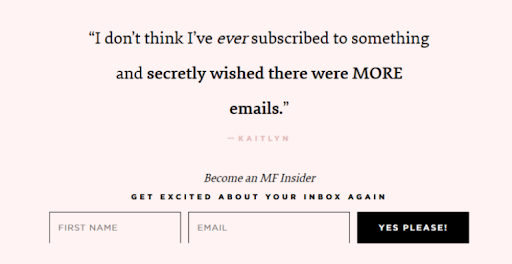
4. Engage visitors with live chat
Live chat is a great way to generate leads on your website. When people visit your website, they often have questions before they make a purchase. Live chat is one of the easiest ways to connect visitors with your business and capture their interest, rather than them bouncing without leaving their information. Customers love being able to ask questions right away too. In a Kissmetrics survey asking about the impact of live chat on the buying experience, “63% said they are more likely to return to a website that offers live chat, while 38% said they had made their purchase due to the chat session itself.”
If you’re using chatbots on your website, collecting leads can become almost automatic. Proactive chat rules trigger a chat widget to pop up at the most impactful time to see if your visitor has any further questions or needs more information. By setting up automation workflows using Zapier or its alternatives, you can collect contact information, assign the new contact to a salesperson to follow up with, and send a welcome email to your new lead all at the same time.
Vidyard pops up a chatbot on their website once the visitor has scrolled partway down the home page. This helpful bot offers advice and connects visitors to sales or support – making it easy for visitors to convert to leads.
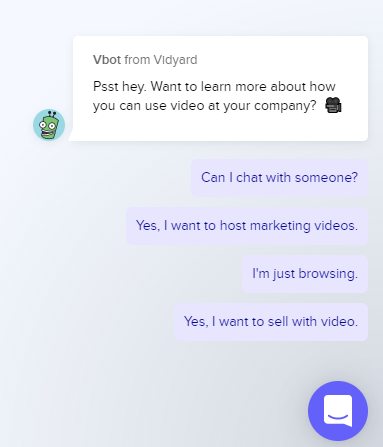
5. Pay attention to your SEO
Optimizing your website to be found by search engines might not feel like the most glamorous lead generation strategy, but it’s extremely effective. SEO is the process of making your website readable for search engines and includes adding specific keywords and growing “authority” through backlinks from other sites and improving content quality. Even if you’re focused on creating helpful content and other types of lead magnets, adding in a little SEO effort can have a big payoff on how many people visit your website and find that content. BrightEdge found that SEO drives 1000% more traffic than other forms of marketing, namely organic social media.
Simplr, an automation platform for CX, optimizes its content so it shows up first when potential customers look for help improving response times. When readers click through to their website they can learn more about the benefits of Simplr and talk to their sales team.

6. Offer free tools
Offering a free tool, such as an industry benchmarking tool or a word-cloud builder, can attract prospects that have a specific pain point or need to complete a specific task. Only 4% of website visitors are ready to purchase when they first land on your website. By giving something valuable to the 96% of visitors who are just browsing, you’re much more likely to leave a good impression. Whenever they need to shrink a PDF, check their website responsiveness settings, or create a free form, they’ll visit your website first. Just make sure you have a clear pathway ready to nurture those leads into prospects for your paid product.
For example, Moz offers a free domain analysis tool. At the bottom of the results page, right when you’re wondering how to improve your results, they offer a free trial to their fully-featured paid product.
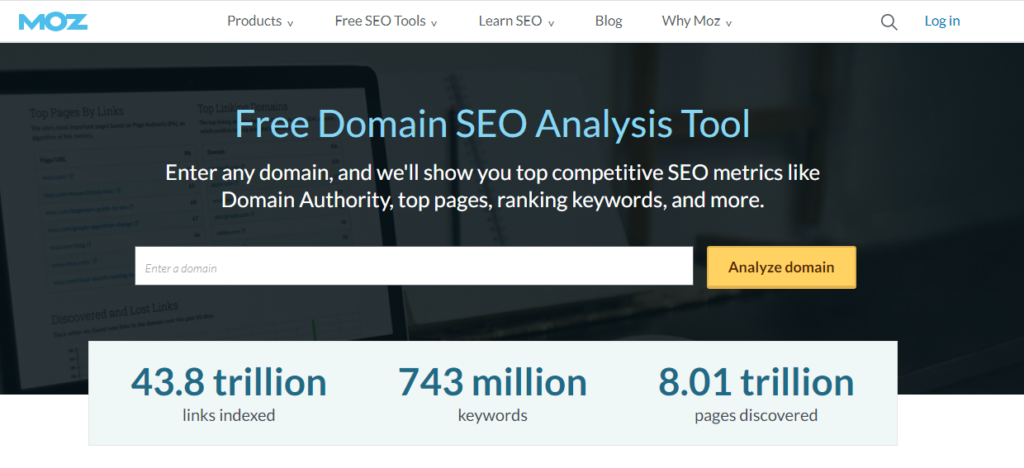

7. Develop referral programs
Customers who love your product are a great source of high-value leads. Because they know and love your product, they’re likely to recommend you to their friends, family, and work acquaintances that need to solve similar problems. But rather than waiting for customers to do the work, make it easy (and rewarding) for them to refer your product to their network through a referral program. These programs encourage customers to refer their friends through click-to-share links, well-timed asks, and discounts or money back for every new customer they refer.
Social Media Today found that 78% of B2B marketers achieve good or even excellent quality leads from referrals and that over half of those same marketers find referral programs offer a lower cost-per-lead than other channels.
Financial management platform Wealthsimple pops up a referral request to customers right after they deposit new funds into their savings account. Both the customer and the friend get a bonus, and the company gets a new lead!
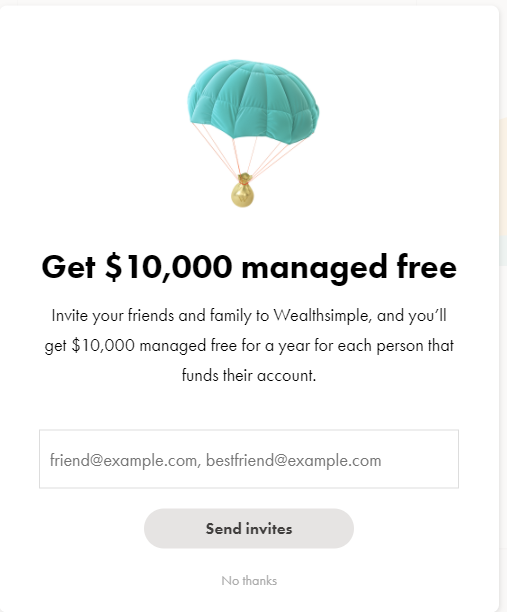
8. Capture interest on customer review sites
No matter what industry you’re in, there are review sites that cater to your potential customers. Review sites such as G2 Crowd, Yelp, Glassdoor, and Capterra all allow people to review your business and see how others rate your products too. This is all happening whether or not you choose to interact with these sites. However, if you take the time to respond to reviews, encourage your advocates to leave positive reviews, and work with these sites to offer quick responses you can improve the effectiveness of this lead channel. One-third of consumers who responded to a recent HubSpot Research survey said that review sites played an important role in their decision-making process when evaluating new purchases.
For example, monday.com works with G2 Crowd to capture leads on their review site, as well as be included in their annual review lists. This increases the number of prospects that consider monday.com in their purchasing decisions.
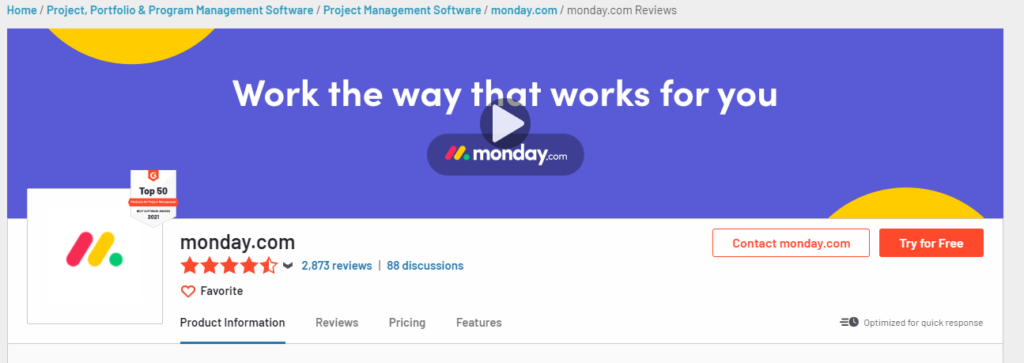
9. Create multimedia content
More of our online interactions are moving away from text and towards other forms of media. Video content and podcasts are extremely popular across every demographic. When done well, video can attract new audiences and help nurture existing prospects. For example, 90% of customers say they use video to make buying decisions, and 64% of customers say they’re more likely to purchase after seeing a video. Finally, 87% of marketers who work with video say it’s increased traffic to their website and increased sales.
Music production company Pyramind creates long-form videos that offer expert-level advice to potential customers. To use these as a lead gen tool they cut them into bite-sized teasers for YouTube, and then direct the audience to their website for the full version. Using Wistia as their video hosting platform means they can add CTA throughout the full video to capture leads.

10. Offer free webinars
Over half of marketers say that webinars generate the most high-quality leads when it comes to top-of-the-funnel lead generation strategies. It makes sense since a webinar offers specific information in exchange for attention and contact data. Not only will you know what topics are valuable to this audience, but you’ll also be able to contact them in the future to nurture your new leads.
YNAB (You Need a Budget) offers a free series of workshops and webinars that help you learn to build and manage a budget. These workshops are designed for the public but tie in closely with their app that helps individuals manage their personal finances. New potential leads come for the webinar, but stay for the helpful app that will make their life easier.
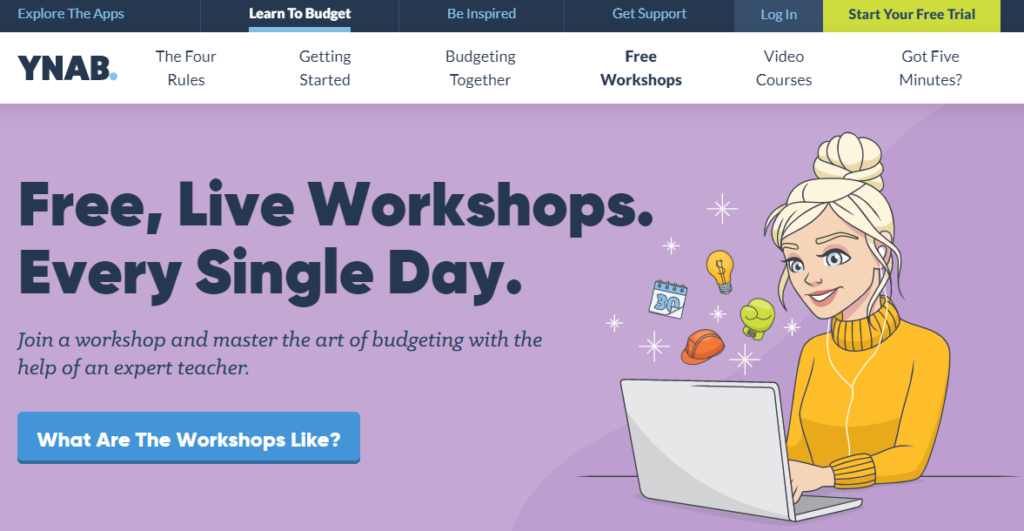
Use these top 10 lead generation tactics to grow your business
When it comes to getting more leads, it helps to think outside the box and try as many tactics as you can. Every channel provides a new way of getting your business in front of a bigger audience. Use the ten examples above to come up with ideas for your own lead generation efforts!




